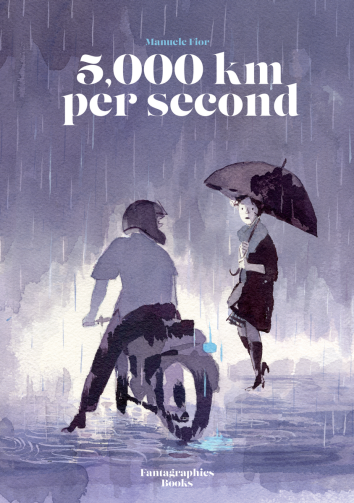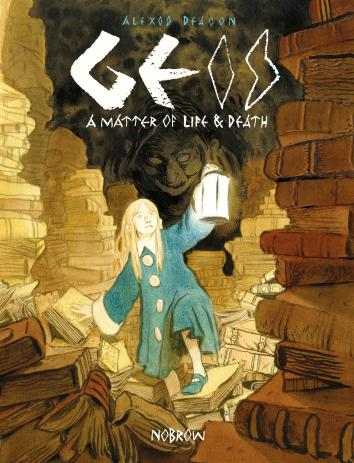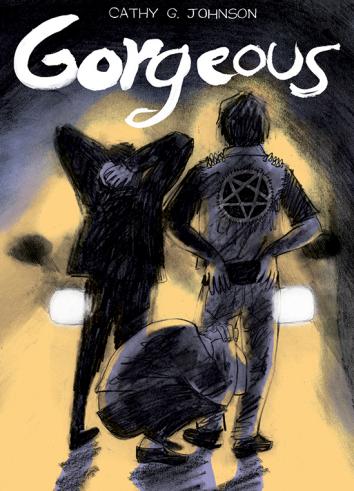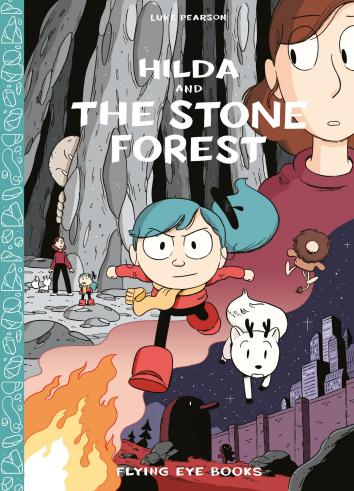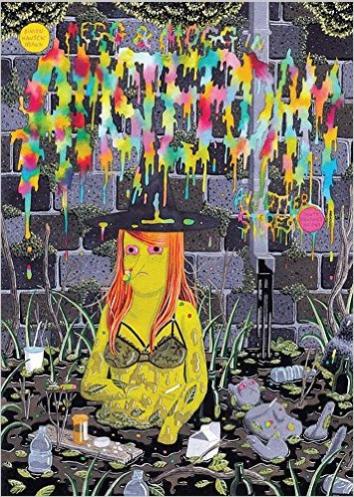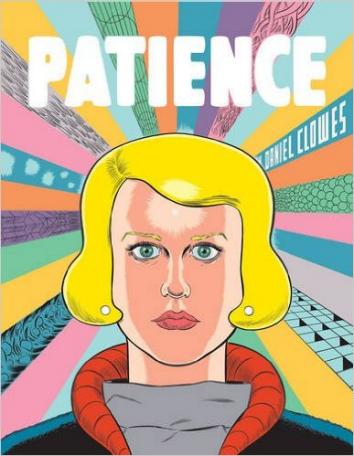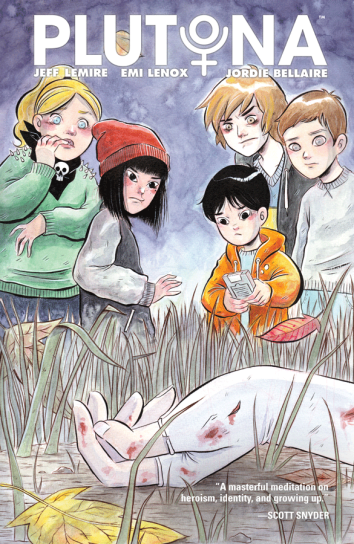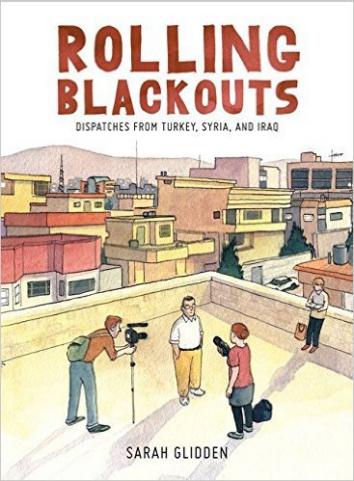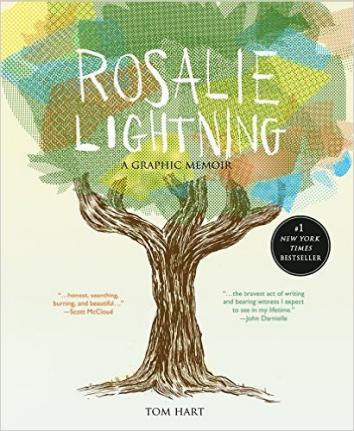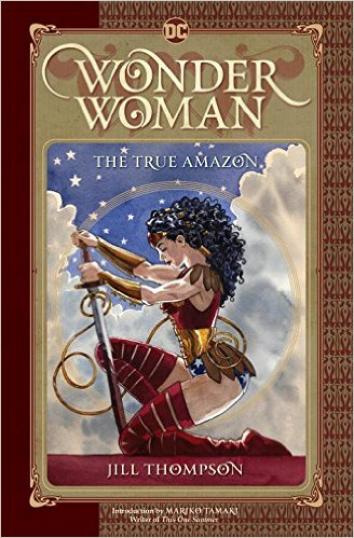
Slate is an Amazon affiliate and may receive a commission from purchases you make through our links.
Our 10 Favorite Comics of 2016
Dead superheroes, dissolute witches, dangerous trolls, lost lovers: the best in graphic storytelling.
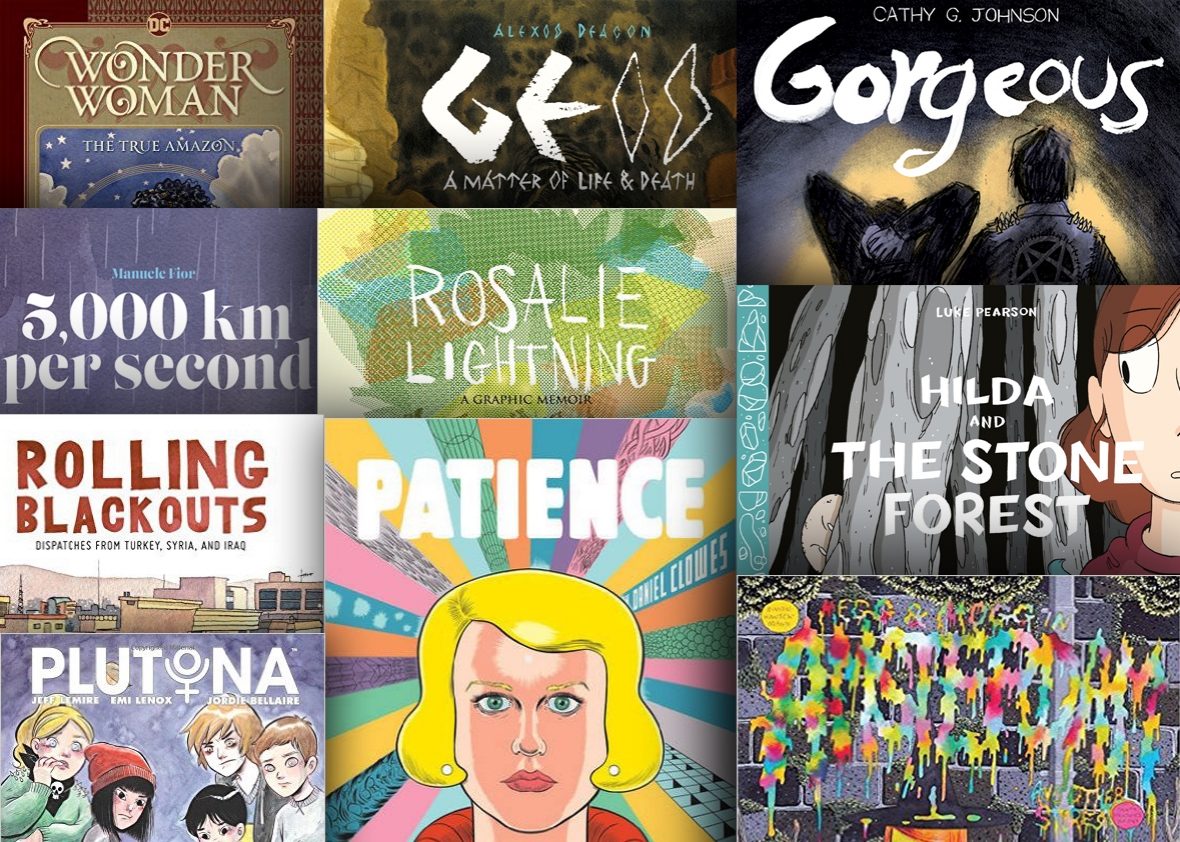
Photo illustration by Slate. Images by Amazon.
Slate’s Best Books of 2016 coverage:
Monday: Laura Miller’s favorite books of the year.
Tuesday: The best comics and the best book jackets of the year.
Wednesday: Katy Waldman’s favorite books of the year.
Thursday: Mark O’Connell’s favorite books of the year.
Friday: The best audiobooks of the year.
* * *
The graphic novel boom of the past decade has settled down, and the big trade publishers are divesting from the comics market—only one of our Top 10 books comes from a Big Five publishing house. But that means more room for the established art-comics publishers such as Fantagraphics and Drawn and Quarterly, as well as for upstarts including Nobrow, Adhouse, Koyama, and Secret Acres, all of whom have taken the opportunity to publish ambitious and fascinating work. Top Shelf published the first comic to win a National Book Award, March, an exemplar of a new flourishing of all-ages comics from publishers like Flying Eye, Scholastic, and First Second, among many others. Meanwhile, Image continues to push the envelope on genre comics, while Marvel and DC are finding more and more ways to bring interesting artists and writers into their folds.
These are our 10 favorite comics of the year; check them out, and also consider subscribing to regularly published anthologies like Image’s Island (which serialized terrific stories from Simon Roy, Matt Sheehan and Malachi Ward, and F Choo, among many others) and Youth in Decline’s Frontier (which published standalones this year from Eleanor Davis, Rebecca Sugar, and Kelly Kwang).
5,000 km Per Second by Manuele Fior. Fantagraphics.
This Italian comic, translated into English for the first time, was an Angoulême winner in 2011. It’s a small miracle of cartoon storytelling tracing the relationship of two Italian teens as they fall in love, separate for decades, and reunite uncertainly in middle-age. Like the entire Before Sunrise series in one volume, 5,000 km packs a lot of life, love, career, and regret into its seven evocative chapters, each one a self-contained watercolor master class in composition, color, and narrative movement. DK
Geis: A Matter of Life & Death by Alexis Deacon. Nobrow.
“The great chief Matarka knew that death was near at hand,” reads the introduction to this spooky original fairy tale. “Fate would choose the one fit to take her place.” An enchantress summons 50 souls to compete for Matarka’s throne, but the geis—or curse—she sets on those competitors ensures that only one can win, and the others must perish. This first volume of what promises to be a rousing adventure is gorgeously drawn and full of characters to root for—and against. DK
Gorgeous by Cathy G. Johnson. Koyama Press.
A slim, haunting tale in pencil by a rising talent in indie cartooning. Gorgeous is about a pair of dirtbags and the car crash they cause. It’s also about the search for beauty in unlikely places, and about the way strangers can help us and betray us. And, somehow, it’s about competitive weightlifting too. Full of understated narrative twists and turns, it’s a great short story by an exciting artist who keeps getting better and better. DK
Hilda and the Stone Forest by Luke Pearson. Flying Eye.
Luke Pearson’s Hilda books are the most imaginative, most inspiring, and most beautiful all-ages stories published in the past decade. This newest volume—which deepens the relationship between Hilda and her put-upon mom, while adding layers to the mythology of their odd little city, Trolberg—is the best yet, suggesting that Hilda may join Tintin and the Moomins as comic-book immortals. Here’s hoping the animated Hilda series, coming to Netflix in 2018, is just as great—and that it doesn’t slow down Pearson’s cartooning. DK
Megg & Mogg in Amsterdam by Simon Hanselmann. Fantagraphics.
Nothing has made me laugh more this year than this collection of short stories, many of which manage to be uproariously funny, even when they’re cruelest to their characters. If Portlandia satirizes the dream of the ’90s, Simon Hanselmann’s Megg and Mogg comics—which follow the drug-addled misadventures of a dissolute witch and her feline familiar/lover—is that decade’s puke-green hangover. This is a book in which a bizarre aside about a suitcase full of glass dildos can give way to a frank reflection on depression. Thanks in large part to Hanselmann’s subtly complex cartooning, those tonal shifts never feel jarring—to the contrary, they’re proof that it’s possible to mine joy from even the most miserable scenarios. JB
Patience by Daniel Clowes. Fantagraphics.
In Patience, a desperate time traveler struggles to prevent his wife’s murder—and like all time travelers, he makes a mess of things along the way. Those soft-science fiction trappings aside, this is a deeply human tale, clear-eyed about the emotional weight of personal history. Assured and careful as ever, Daniel Clowes’ artwork precisely conveys his characters’ alienation from one another, even as his narrative largely eschews the misanthropy that pervades many of his earlier novels. In its place, he offers an intimate reflection on the pain of watching those you love suffer. JB
Plutona by Jeff Lemire and Emi Lenox. Image.
Five kids, all misfits in their own way, stumble on a secret. The beloved, unbeatable superhero Plutona has somehow been defeated—and her corpse lies in the woods. What should they do? Who should they tell? How can they make money off it? Could the body be the key to transforming them into something bigger than themselves? This comic-book twist on Stand By Me is unusually smart about the way kids treat each other and uncommonly unsentimental about the superheroic tropes it twists. DK
Rolling Blackouts by Sarah Glidden. Drawn and Quarterly.
In 2010, a group of independent journalists and a retired Marine traveled through Turkey, Syria, and Iraq, accompanied by cartoonist Sarah Glidden. Rolling Blackouts records the everyday realities of that trip, following the foreign crew as they try to tell the story of those war-torn regions. Haunted by both what had come before and the conflicts that would arise after, Glidden’s memoir is less a work of conventional reporting than it is a meditation on journalism itself. It’s a story about the struggle to understand the world—and the tools we use to make sense of it. JB
Rosalie Lightning by Tom Hart. St. Martin’s.
In his memoir Rosalie Lightning, Tom Hart confronts an almost unbearable tragedy: the sudden death of his young daughter. Where a lesser book might tell a story about coming to terms with such a loss, this one dwells on the unbearable fact of it. Hart’s often jagged line work conveys a sense of persistent emotional intensity, of ugly feelings that linger long after the events he describes. His greatest accomplishment, though, may be the paternal care with which he renders the titular Rosalie, teaching us to love her as he did, and to admire her for the fullness with which she lived her brief life. JB
Wonder Woman: The True Amazon by Jill Thompson. DC Comics.
Critics often speak of superhero comics as “modern mythology,” and while there’s some truth to the term, it mostly applies in aggregate: It’s about the way that stories accumulate over the decades, told and retold so often that the weight of history underwrites every new fable. In offering a new version of Wonder Woman’s origin story, The True Amazon accomplishes something more remarkable, building a myth of its own, one never weighed down by past stories, even when it borrows from them. Thompson turns the tragic beginnings of most superheroes on their heads. Here, Wonder Woman is no product of a doomed planet or a murdered family; instead, she authors her own catastrophe. The True Amazon elegantly imagines a character shaped by her own faults and desires, one who has to own her sins in order to overcome them. JB
---
Read the rest of the pieces in the Slate Book Review.
Plutona
(null)
